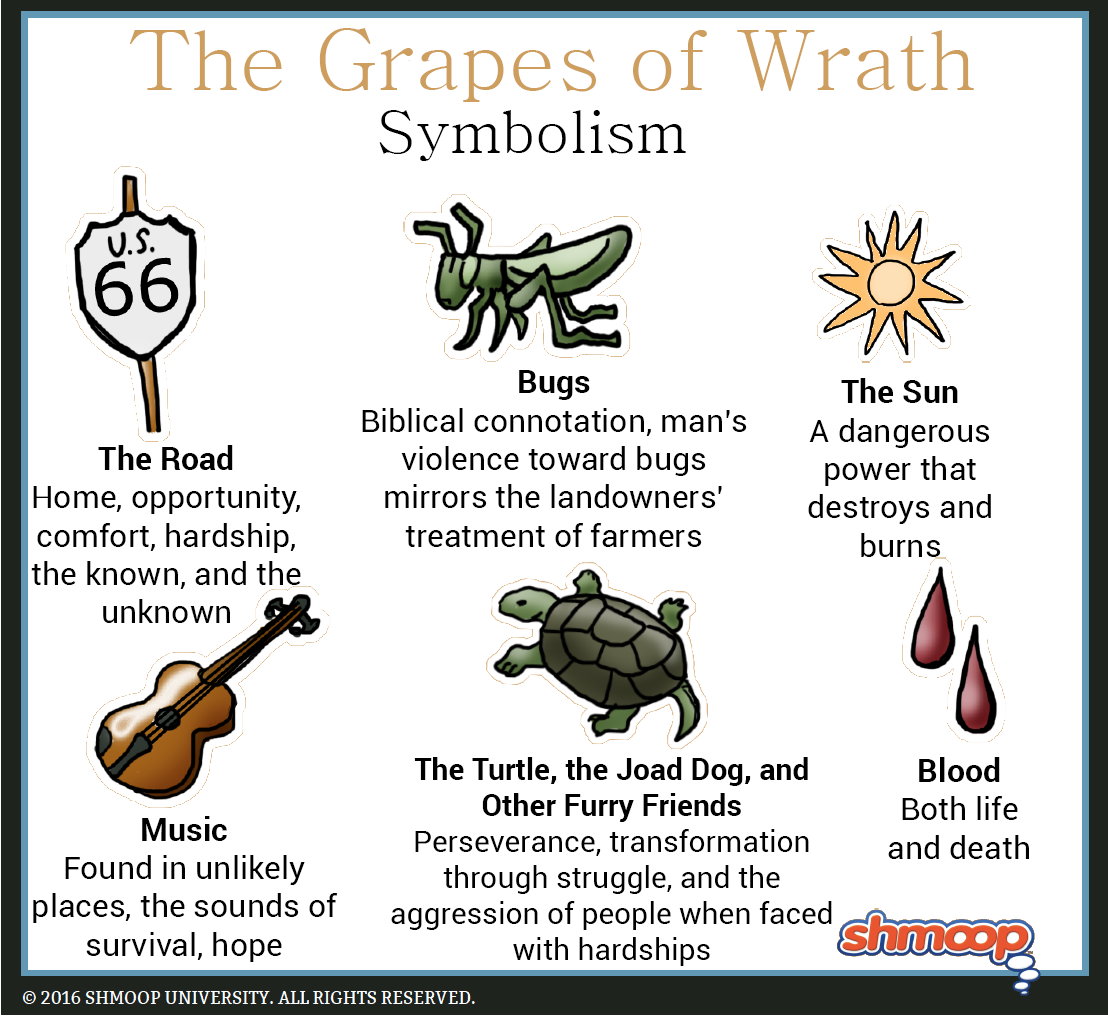Symbolism, Imagery, Allegory
 (Click the symbolism infographic to download.)
(Click the symbolism infographic to download.)
Almost As Bleak As Cormac McCarthy's The Road
... but not quite as apocalyptic. In The Grapes of Wrath the road wears more (symbolic) hats than a pick-up artist.
From the minute we watch Tom Joad return home after four years in prison, roads take on great meaning. They're synonymous with both home and opportunity, comfort and hardship, the known and the unknown. When he gazes at the road that will take him home at last, his "dark quiet eyes became amused as he stared" (2.53).
But as the Joads travel westward, Route 66 becomes "the mother road, the road of flight" (12.1)—it's the lifeline, the thing that allows thousands of families to pursue their hopes and dreams. It is also (depressingly enough) the road that leads to their misery in California.
It's symbolically significant that Route 66 never really intersects with any other major highway or road—it goes in two directions only. When you're on Route 66, you can either go forward in search of opportunity and possible hardship, or you can go backwards and return to the poverty and familiarity you came from.
We also learn that roads are dangerous places. If you're a turtle or a dog trying to cross the road, beware: there's a good chance that you will get smooshed by a sadistic driver. In the world of this novel, drivers like to create road-kill.
The road can also be dangerous if your car breaks down far from the next town—in the 1930s telephones were few and far between, and if you were down and out in the 1930s there was a good chance that the mechanics along the way would be absolute dirtbags towards you.